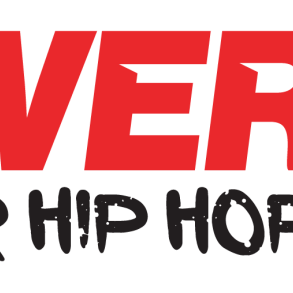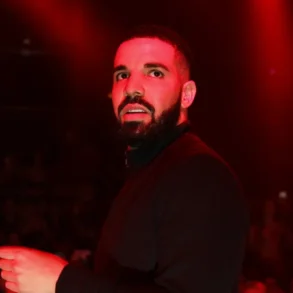Veronica Glover
Senior Staff Writer
Nicki Minaj performing in 2017. Photo by Kevin Mazur/BBMA2017/Getty Images for dcp
The 2023 celebration of the Fiftieth Anniversary of Hip Hop highlighted the genre’s history and cultural importance. Feuds between artists are part of that legacy, and this year, we see tension brewing between the acclaimed female artists who are reigning over the once male-dominated genre. Unfortunately, we have yet to bask in the success and artistry of all the talented emcees who have left their imprint on history, culture, and music. Instead of celebrating Black excellence this month, audiences—and typically apathetic users—are now present for an unwarranted catfight amongst esteemed musicians.
Cancel culture and stan culture only exacerbate feuds that could potentially have been resolved amicably and in private. Fans aim to participate in matters they know little about and embellish narratives for entertainment and approbation.
Since the dawn of hip-hop, it has been common for famed rap artists to go toe-to-toe for a little friendly competition. However, things went awry at times, and viciousness unfolded between these artists while millions watched. While a few altercations arose from bravado, other moments came from cities of origin or which U.S. coast people aligned with. For instance, in the early 1990s, well-known rappers Tupac Shakur and Notorious B.I.G. became the catalysts for one of the world’s most dangerous rap beefs ever. The infamous feud dates back to the early 1990s, when Biggie and Tupac initially met. They became friends and performed together in 1993 at Madison Square Garden in New York. However, their friendship was short-lived. In 1994, three men whom Tupac believed were from Biggie’s label, Bad Boy Records, robbed and shot him in the lobby of Quad Recording Studios in Manhattan.
Tupac accused Biggie and Puff Daddy—founder of Bad Boy—of being involved in the attempt on his life. The incident sparked a feud that went beyond the two rappers and their inner circle. It became an aggressive turf war between the East and West Coast. While both men were originally from New York, Tupac was associated with the West Coast and its major label, Death Row Records. Tupac’s “Hit ‘Em Up” potently dissed Biggie and Bad Boy, and Biggie’s response titled “Who Shot Ya?” further exacerbated the feud, despite Biggie’s claim the track was not about Tupac.
The tension continued to brew as Tupac unleashed several more diss tracks targeting Puff Daddy’s label. Aside from Notorious B.I.G.’s veiled responses in his music, he never publicly mentioned a desire to harm Tupac. Regardless, Tupac had a vendetta against Biggie, his affiliates, and the entire East Coast. He had his heart set on aiming low and returning a few shots in the form of dark, melodic poetry. Unfortunately, Tupac was gunned down in a drive-by shooting in Las Vegas in September 1996. Notorious B.I.G. was shot and killed in Los Angeles six months later.
Another questionable yet memorable feud involves notable rappers Drake and Meek Mill. Their feud began with a 2015 Meek Mill tweet accusing Drake of having a ghostwriter on Mill’s song, “R.I.C.O.,” which featured Drake. Mill asked his followers to stop comparing him to Drake, asserting, “He don’t write his own raps!” Drake did not take the accusations lightly; chaos ensued over threats and receipts, creating a critical turning point in hip-hop history.
After the back-and-forth insults, Drake’s suspected ghostwriter, Quentin Miller, stepped into the conversation to reveal himself. Miller is credited as a writer on four songs from Drake’s 2015 mixtape If You’re Reading This It’s Too Late, but whether he wrote Drake’s verse in “R.I.C.O.” was still up for debate. Drake released the diss tracks “Charged Up” and “Back to Back” within four days of each other. Once fans and international audiences offered their opinions, it appeared that Drake won the battle, even after Meek responded with his track “Wanna Know.” Mill removed the song from his SoundCloud after a few weeks. Unlike their predecessors, Drake and Meek Mill were able to reconcile and collaborate again on the 2019 song “Going Bad.”
Moving forward to the 2020s, the women of the hip-hop industry are at odds: Nicki Minaj versus Cardi B, Nicki versus Megan Thee Stallion, Nicki versus Latto, and Latto versus Ice Spice. The history of these feuds unveils tensions brewing for quite some time. Still, these back-and-forth, bar-for-bar jabs are hard to watch. It feels like I’m an innocent bystander, watching as two highly regarded individuals aim to destroy each other. While hip-hop history suggests that nothing is off limits, women’s unity and liberation are imperative now more than ever. Society is slowly but surely progressing and outgrowing destructive social constructs, although misogyny is still rooted deep in most male-dominated spaces, like hip-hop. Women are now at the helm of the rap industry, despite that misogyny, while many men struggle to find their footing in the current climate of mainstream hip-hop. This change marks the dawn of a new era of hip-hop: a revolution that must be embraced, not dismantled.
This post was originally published on this site be sure to check out more of their content.









